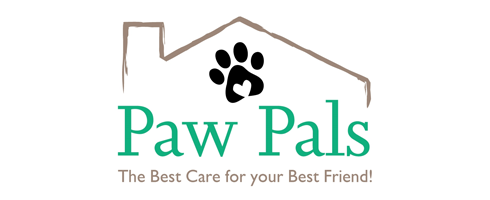As responsible dog owners, we prioritize our furry friends’ well-being with regular walks, nourishing meals, and veterinary check-ins. Yet, amidst these vital activities, one crucial aspect often slips through the cracks – dog dental care. Overlooking this can lead to serious health problems and discomfort for our beloved canines.
This article aims to underscore the importance of incorporating dog dental care into your daily routine and provides practical, easy-to-follow tips to ensure your pup maintains a gleaming, healthy smile throughout their lifetime.
Treats that Clean Teeth
Ensuring your dog’s dental health is a breeze when you incorporate treats and toys designed specifically for this purpose. Beyond the traditional view of dental care, these goodies can turn teeth cleaning into an enjoyable and rewarding experience for your furry friend.
Natural Chews: Rawhides and Knucklebones
Investing in natural treats such as rawhides or knucklebones is like giving your dog a dental spa day. These treats offer more than just a delightful chew – they provide a natural and effective way for your pup to scrub away plaque and maintain optimal dental health. The act of gnawing on these treats engages the jaw and teeth, promoting healthy chewing habits that contribute to cleaner, stronger teeth.
Rawhides, derived from the inner layers of animal hides, offer a satisfying chewing experience. The fibrous texture not only helps to scrape off plaque but also stimulates saliva production, a natural defense against bacteria. Knucklebones, rich in cartilage and connective tissue, not only contribute to dental hygiene but also serve as a source of essential nutrients for your dog.
Dental Treats: A Delicious Solution
In addition to natural chews, the market offers a plethora of dental treats specifically manufactured to support oral health. These treats are formulated with ingredients that not only entice your dog’s taste buds but also actively contribute to reducing plaque buildup. Enriched with dental-friendly compounds, these treats can be a convenient supplement to your dog’s dental care routine.
Opt for dental treats that are not only delicious but also contain elements like enzymes or abrasives that aid in breaking down plaque. Incorporating these treats into your pup’s daily regimen can complement other dental care efforts and make the brushing process smoother.
Non-edible Chew Toys: A Safe and Beneficial Alternative
For dogs who may not be keen on edible treats or for pet parents seeking additional options, non-edible chew toys with a rough surface are a fantastic alternative. These toys are designed to provide a satisfying chewing experience while helping to dislodge plaque and tartar.
When selecting non-edible chew toys, it’s crucial to consider the size and durability. Choose toys that are appropriately sized for your dog, preventing any choking hazards. The rough or bumpy surface of these toys works wonders in promoting dental health without the need for consumption, making them a safe and long-lasting solution for your pup’s oral care.
Remember, the key is variety. Experiment with different types of dental treats and toys to discover what your dog enjoys the most. By incorporating these dental delights into their routine, you not only contribute to their dental health but also turn the task of teeth cleaning into a joyous and rewarding experience for both you and your canine companion.
Doggie Tooth Cleaning
Embarking on the journey of brushing your dog’s teeth may initially seem like a daunting task, but the dividends it pays in terms of your furry friend’s health are immeasurable. Here’s a step-by-step guide to not only make the process manageable but also transform it into a positive and bonding experience for both you and your canine companion.
Gather the Essentials
Begin by assembling the necessary supplies, turning toothbrushing into a streamlined routine. Invest in a dog-specific toothbrush – one with soft bristles that cater to your dog’s comfort. Pair it with dog-safe toothpaste, featuring flavors like beef, chicken, or seafood that your pup finds enticing. For quick cleanups, have canine dental pads on hand to wipe away bacteria when time is of the essence.
Familiarization Through Sniffing and Licking
Introduce the toothbrush and toothpaste in a way that allows your dog to become acquainted with these new additions to their routine. Allow them to sniff and lick the toothbrush, creating a positive association with these tools. This step is crucial in reducing any apprehension your dog may have about the upcoming brushing sessions.
Positive Associations and Rewards
Turn toothbrushing into a positive experience by incorporating rewards. After each successful brushing session, provide your dog with a treat or praise. This positive reinforcement helps your pup associate the activity with something enjoyable, making them more receptive to future brushing sessions.
Gradual Introduction of the Toothbrush
Introduce the toothbrush gradually, starting with a focus on the visible teeth. Begin by gently brushing the front teeth in a circular motion. This allows your dog to acclimate to the sensation without feeling overwhelmed. As your pup becomes more comfortable, gradually progress to the back teeth, ensuring a gentle and patient approach.
Establish a Routine
Consistency is key to successful toothbrushing. Dedicate a specific time each day to this activity, ideally making it a part of your daily routine. Whether it’s before bedtime or after a walk, having a set schedule helps your dog anticipate and accept the brushing process. By integrating it into their routine, you’re not only ensuring better dental health but also fostering a sense of predictability and security for your dog.
Make It Enjoyable and Stress-Free
Transform the brushing process into an enjoyable and stress-free experience. Create a comfortable environment with soft lighting and soothing tones. Speak to your dog calmly and reassuringly, reinforcing the idea that toothbrushing is a positive and loving activity. If your dog is particularly anxious, consider playing calming music or incorporating playtime before or after the session.
By following these steps and infusing a sense of positivity and routine, you’ll not only maintain your dog’s dental health but also strengthen the bond between you and your canine companion. A healthier and happier dog is not only a delight to be around but also makes vet checkups smoother, ensuring a lifetime of wagging tails and bright, gleaming smiles.
Reach Out to the Northern Virginia Dog Care Specialists
Dog dental care need not be complex; it can be as simple as incorporating chewy treats and establishing a daily tooth-brushing routine. By committing to these practices, you invest in your dog’s overall well-being, fostering a positive association with oral care.
For more insights or assistance in pet care, including dog walking or pet sitting services, don’t hesitate to reach out to Paw Pals today!


